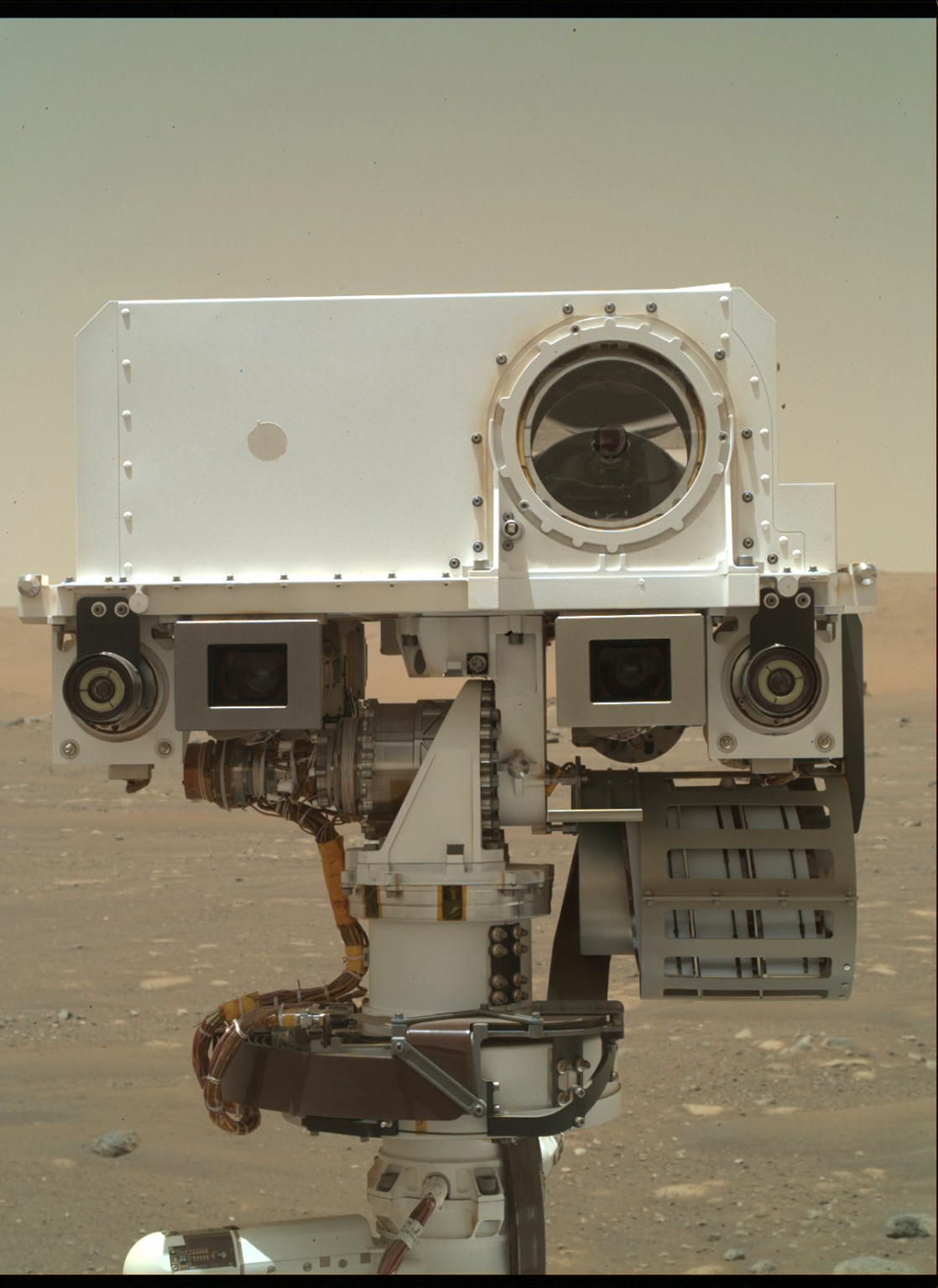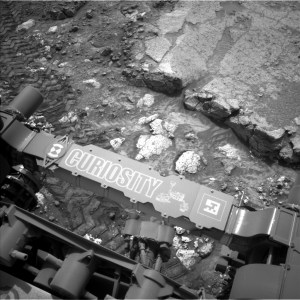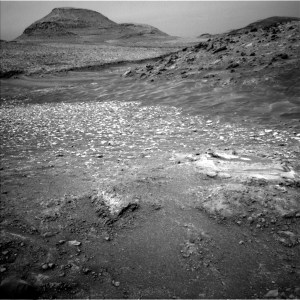3 min read
Sols 4205-4206: Curiosity Would Like One of Each, Please!
Earth planning date: Monday, June 3, 2024
You know that feeling at the ice cream shop when you’re presented with so many tantalizing options and you have to narrow it down to just a few to taste test, and then you have to strategize how to fit all the best flavors in your bowl? That’s what the past few planning shifts have felt like on Mars. There are just too many cool rocks to choose from!
Curiosity is currently investigating “Whitebark Pass” (which sounds like it should be an ice cream flavor, right?) with a variety of rock textures and colors in our workspace. We spent the weekend at this location, investigating some of the light-toned, pitted clasts and the gray crumbly material that lines the slab. Then there’s the slab itself, and some bright white clasts that we crushed with the rover wheel which caught our eye. The Navcam image above shows the rover arm going in for a close inspection of the slab.
Today’s 2-sol plan includes another helping of contact science and a lot of targeted remote sensing. Essentially the team asked to try a scoop of the tan stuff, some gray stuff on the side, and add in the crumbly white bits while you’re at it. This translated to the team planning DRT, MAHLI, and APXS on “Gem Lakes” to investigate the top of this slab, MAHLI and APXS hovering over “Convict Lake” to assess a white rock that was crushed by the rover wheel, and a MAHLI dogs eye mosaic on “Starr Minaret” to get a detailed view of the textures in the gray material. Then we sprinkled in a number of ChemCam and Mastcam activities in the targeted remote sensing blocks. The team planned ChemCam LIBS on some different textures at “Cold Springs” and “Fishgut Lake” (umm, maybe I’ll skip that flavor…) and a ChemCam passive observation on “Quarry Peak” to assess a nearby light-toned slab. The team also planned a long distance ChemCam RMI to investigate the distribution of light-toned clasts at “Camp Four.” Multiple Mastcam mosaics are planned to document the ChemCam targets, monitor areas for change detection, characterize the diversity of textures, and assess stratigraphic relationships. And for good measure we also planned environmental monitoring activities including a Navcam line of sight observation, Mastcam tau, Navcam deck monitoring and dust devil survey, in addition to standard DAN and REMS observations.
You’d think we’d be stuffed by now, but the team is already strategizing what else we can get in the next plan before driving away. A sure sign of a delicious workspace.
Written by Lauren Edgar, Planetary Geologist at USGS Astrogeology Science Center
Share
Details
Related Terms
Discover More Topics From NASA






